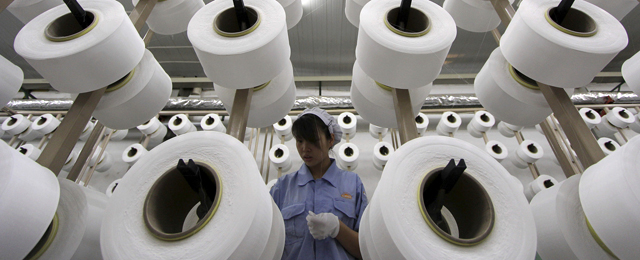The “rise of China” is a misnomer; recovery is more accurate. China was the world’s largest economy until it was overtaken by Europe and America in the past two centuries as a result of the industrial revolution. After Deng Xiaoping’s market reforms in the early 1980s, China’s high annual growth rates of 8 to 10 percent led to a remarkable tripling of its GDP in the last two decades of the 20th century, and many believe it will soon regain its place as the world’s largest economy.
Nonetheless, China has a long way to go to equal the power resources of the United States, and it still faces many obstacles to its development. The American economy is about twice the size of China’s at official exchange rates, but China will soon pass the U.S. if measured at purchasing power parity (PPP). All such comparisons and projections are somewhat arbitrary because they depend on the questions one wants to answer. PPP is an estimate that economists make to compare welfare in different societies, it is also sensitive to population size. Thus India, the tenth-largest economy measured at the dollar/rupee exchange rate, comes out as the world’s third largest in terms of PPP. On the other hand, comparisons in terms of current exchange rates, although they may fluctuate depending on currency values, are often more accurate in estimating power resources. The value of a given salary in terms of being able to buy a haircut or a house is best compared by using PPP. On the other hand, the cost of imported oil or an advanced fighter aircraft engine is better judged at the exchange rates that must be used to pay for them.
Even if overall Chinese GDP passes that of the United States, by whatever measure, the two economies will be equivalent in size, but not equal in composition and sophistication. China still has a vast underdeveloped countryside, and a number of challenges including rapid urbanization. Per capita income provides a better measure of the sophistication of an economy, and even measured in PPP, China’s per capita income is only 20 percent of the American level, and it will take decades to catch up, if ever.
Of course total size is an important aspect of economic power. Having a large, attractive market and being the largest trading partner for a large number of countries is an important source of leverage that China wields frequently. But that is not the same as equality. For example, although China surpassed Germany in 2009 as the world’s largest trading nation in terms of volume, the Chinese are concerned that their country “has yet to develop into a truly strong trading country” because trade in services is lackluster, many exports have low added value, and China lacks “top notch brands compared with world trade powerhouses like the United States and Germany.” (Nineteen of the top 25 global brands are American.) Of transnational corporations, 46 percent of the top 500 are owned by Americans. In other words, Chinese trade is larger but relatively less sophisticated than that of its competitors.
Another illustration comes in the monetary area. China has tried to increase its financial power by encouraging the use of the yuan for trade finance, and it now represents 9 percent of the global total. But the dollar still accounts for 81 percent. As The Economist notes, “size and sophistication do not always go together … In the 2020s China will probably be the world’s biggest economy, but not its most advanced. America’s sophistication is reflected in the depth of its financial markets.” China’s markets are only one-eighth as big and foreigners are permitted to own only a tiny fraction.
Technology is yet another example of differences in sophistication. China has important technological achievements, but it also has relied heavily on a strategy of copying foreign technologies more than domestic innovation. In the words of the Chinese journal South Reviews, “China boasts the title of the largest factory powerhouse in the world … China-based patents are growing fast and exceeding those of developed countries. But most patents obtained in China are less important in the entire industrial chain … In short, China remains weak in science and technological innovation.” Chinese often complain that they produce iPhone jobs, but not Steve Jobs. The trade volume shows up in Chinese statistics, but the value added shows up in the U.S. figures.
Looking ahead, at some point China’s growth will slow, as all economies do once they develop. Some economists think China’s growth will slow to under 5 percent as it downsizes wasteful political investment in its inefficient state-owned sector, and it may have trouble maintaining that level as demographic problems set in after 2020. But even at lower rates China could continue to grow faster than much of the world. However, linear projections of growth trends can be misleading because countries tend to pick the low hanging fruit as they benefit from imported technologies and cheap labor in the early stages of economic take-off, and growth rates generally slow as economies reach the per capita levels of income, in PPP, that China is approaching. This so-called “middle-income trap” is not an iron law, as South Korea proved, but a regularity that many countries encounter if they fail to innovate and change their growth model. President Xi Jinping is well aware of the problem, and China is trying to implement market reforms to avoid it. And since economics is not a zero-sum game, we all have to hope he succeeds.
Joseph S. Nye Jr. is a professor at Harvard and author of a new book Is the American Century Over? This article is taken from the book






Be the first to comment on "China’s Economy Has Bulk, but Not Sophistication"